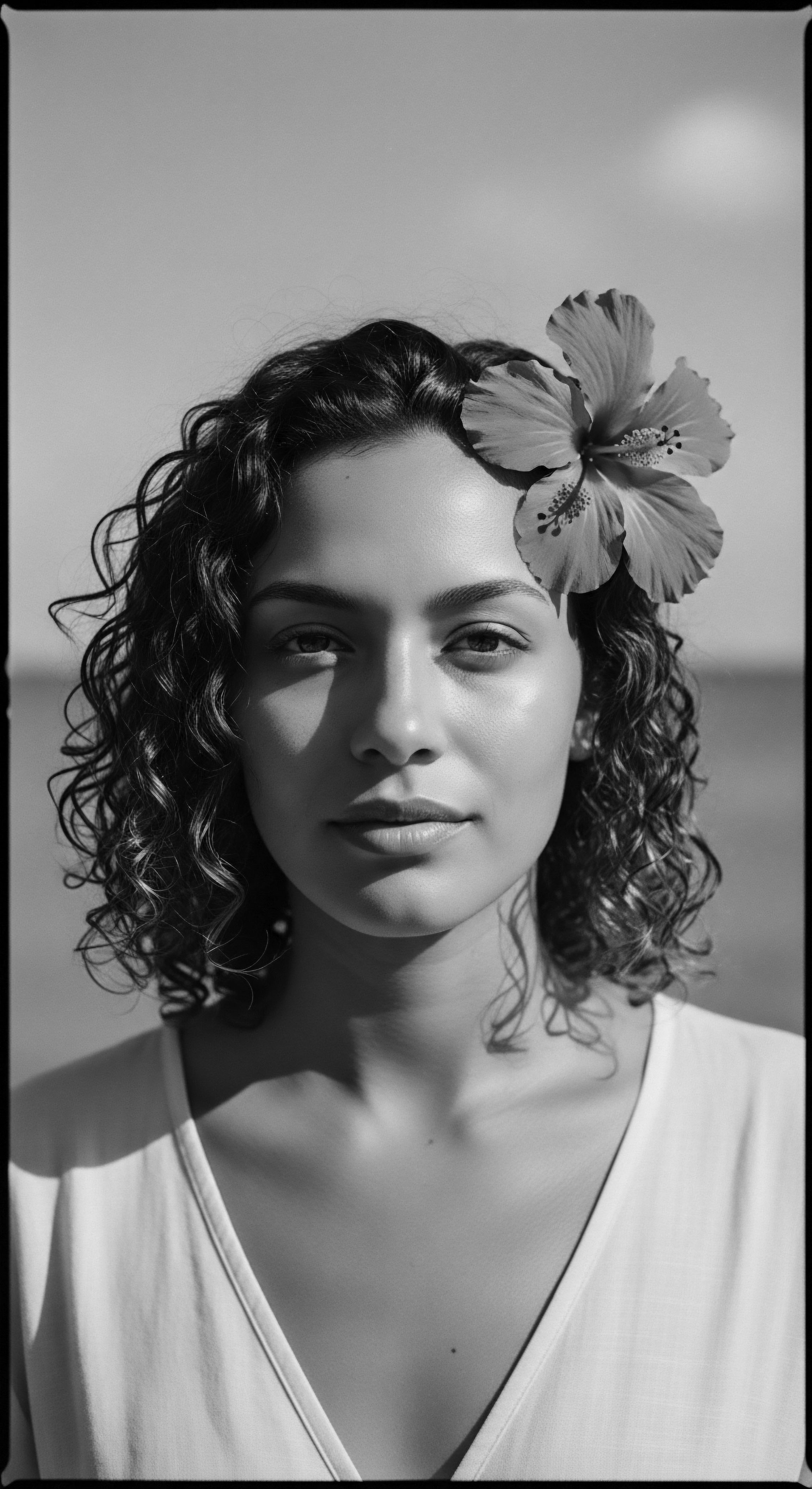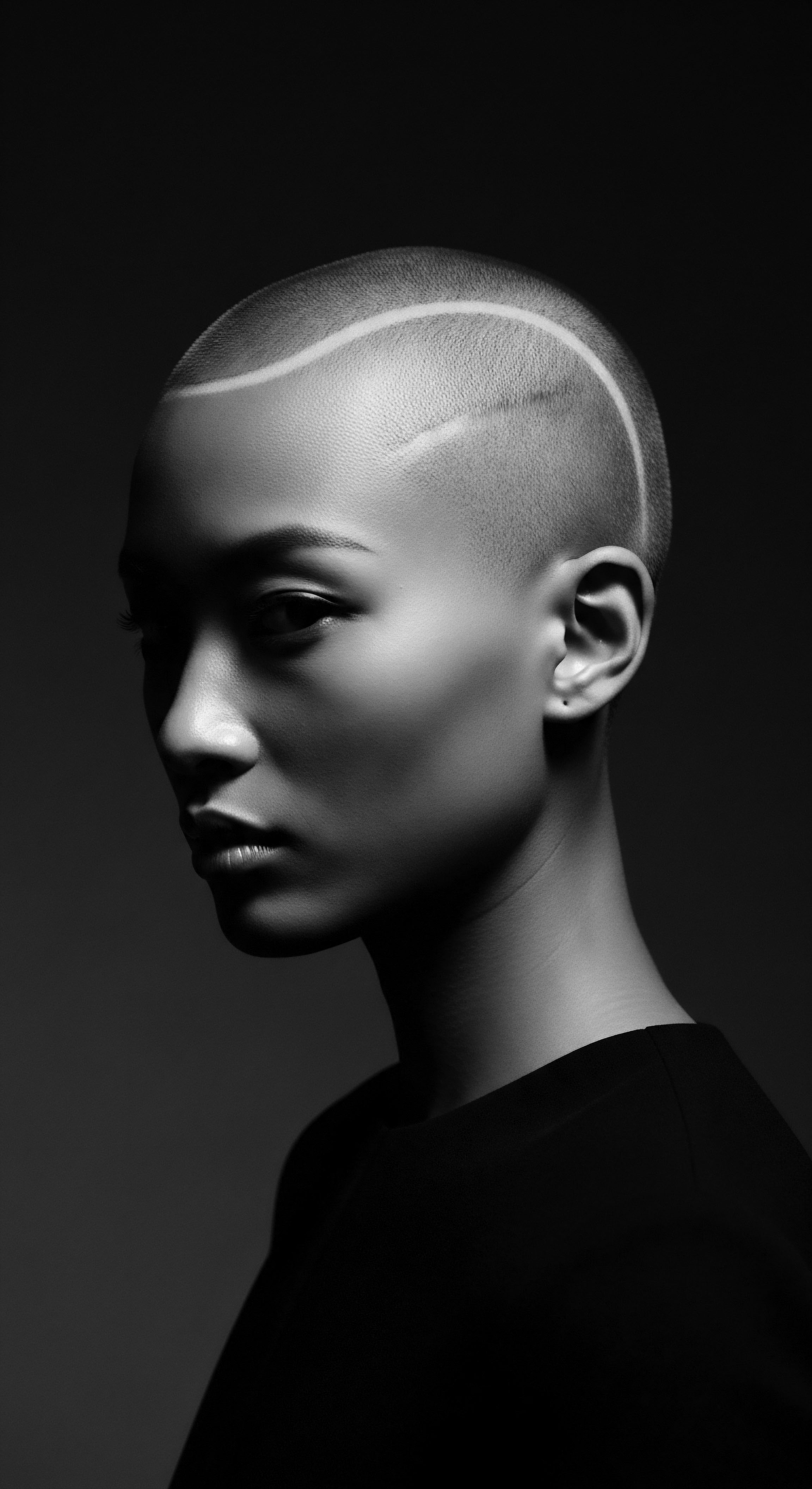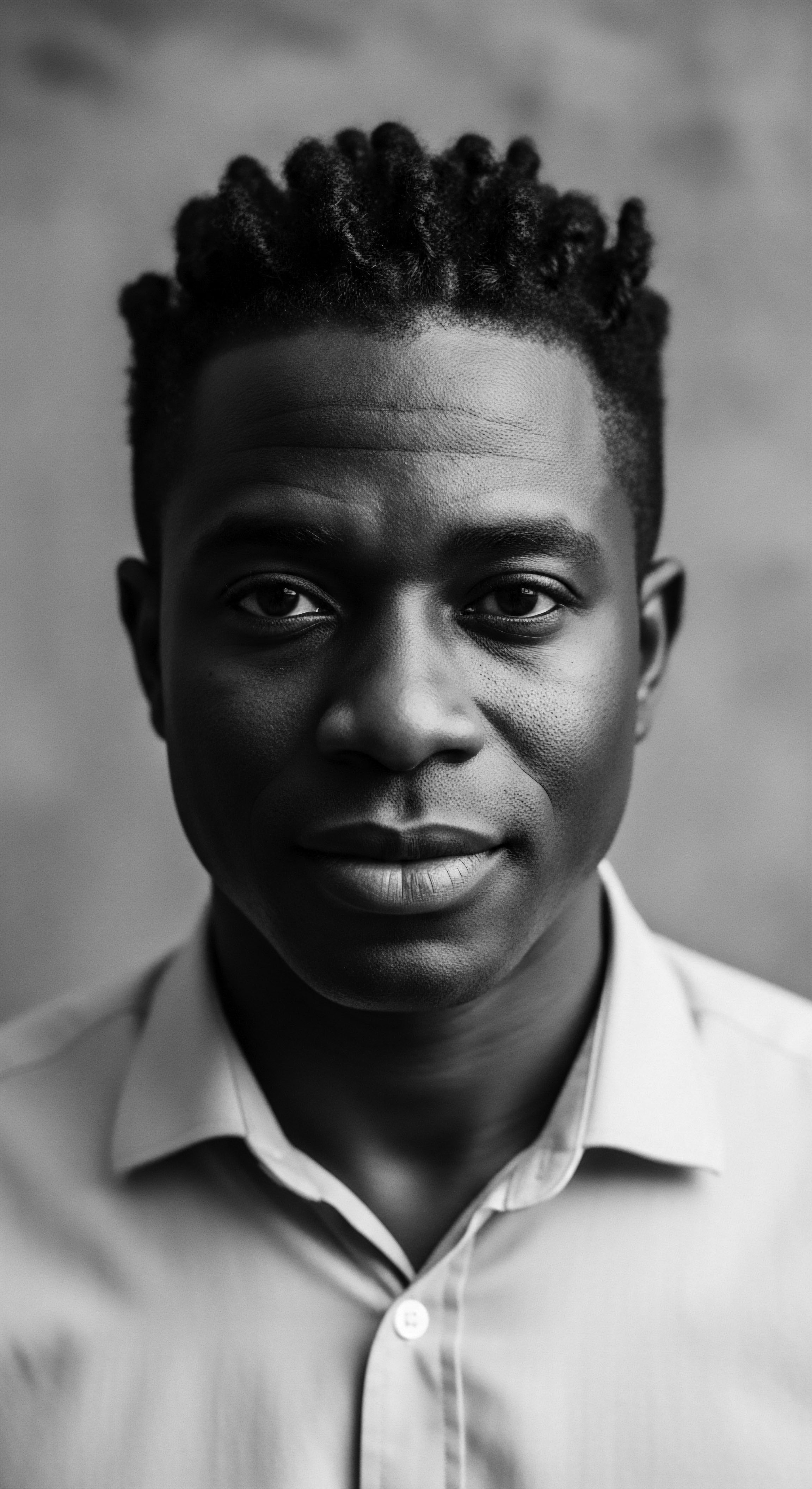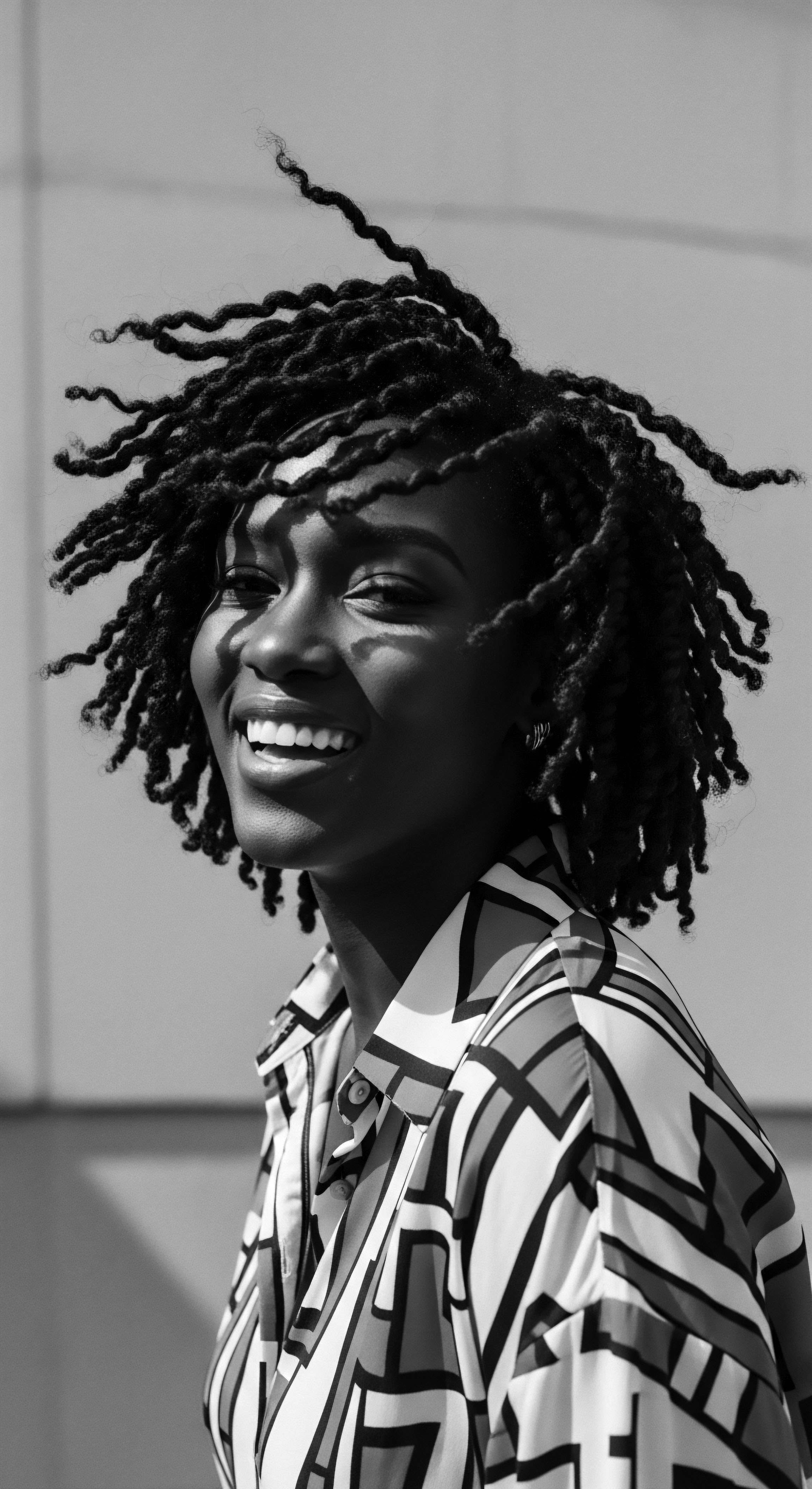
Roots
Consider for a moment the profound intimacy of hair, not merely as strands emerging from the scalp, but as a living record, a soft inscription of centuries. For those of us connected to textured hair, this isn’t simply an aesthetic observation. It is a whisper of ancestral hands, a deep hum of inherited wisdom, a tangible link to lineages that stretch back across continents and epochs. Each coil, every gentle zig-zag, carries the memory of practices designed not just for adornment, but for protection, for communication, for survival.
We speak of heritage, of a deep wellspring of care that has always understood the needs of these unique strands, long before modern science articulated the precise molecular structures. The journey of understanding what ancient protective styles influenced modern hair care heritage begins here, within the very fabric of our being, within the stories our hair continues to tell.

The Biophysics of a Textured Strand
To truly grasp why protective styling became an ancestral imperative, one must first understand the fundamental biology of textured hair. Unlike its straighter counterparts, hair with a coiled or kinky morphology exhibits a distinct elliptical cross-section, rather than a round one. This shape, alongside the uneven distribution of keratin within the strand, creates natural points of weakness at each curve of the helix. It is at these points of curvature that the strand is most susceptible to breakage, particularly when dry or subjected to frequent manipulation.
The natural oils, or sebum, produced by the scalp, which would typically coat a straight strand with ease, face a challenging journey down a highly coiled path. This often results in a drier hair shaft, especially towards the ends, which are the oldest and most vulnerable parts of the hair. This inherent delicate nature, while beautiful, necessitated a conscious, proactive approach to preservation for millennia.
Textured hair, with its unique helical structure and inherent delicate nature at each curve, necessitated ancient practices focused on gentle care and shielding from environmental elements.
The density of hair follicles on the scalp also plays a part. Textured hair often appears dense, but the individual strands, while possessing incredible tensile strength along their length, are also prone to tangling due to their very curl pattern. These biological realities, understood through generations of observation and lived experience, laid the groundwork for sophisticated care routines that prioritized safeguarding the hair’s integrity. It was not a matter of taming, but of honoring the hair’s inherent nature and devising methods to allow it to flourish in its magnificent form.

Ancestral Cartographies Hair as a Social Marker
Throughout ancient Africa, hair was a powerful medium of communication, a visual language spoken without words. It reflected one’s identity, social standing, age, marital status, and even tribal affiliation. Before the written word became widely accessible, hair served as a living canvas, meticulously styled to convey a wealth of information. In ancient Egypt, hairstyles symbolized hierarchy and a connection to divine power.
Elite individuals, both men and women, frequently wore elaborate wigs, crafted from human hair, wool, or plant fibers, often adorned with precious materials like gold and beads. The more intricate the style, the higher one’s social standing. Egyptian pharaohs wore stylized wigs or headdresses that signified their royal status. Even within families, specific styles could denote age; young girls wore distinctive “side-locks” symbolizing youth.
Moving to West Africa, tribes like the Yoruba, Wolof, and Fulani developed intricate patterns with profound cultural and spiritual meanings. Each style was a unique signature, identifying ethnic backgrounds and geographical locations. For example, specific patterns could signal a woman’s marital status, her role within the community, or even her readiness for marriage. In Yoruba culture, hair was considered sacred, a channel of spiritual energy connecting individuals to their ancestors and deities.

Tools of the Old Earth Early Implements for Hair Care
The ingenuity of our ancestors in developing tools for hair care stands as a testament to their deep understanding of textured hair. These implements, often carved from wood, bone, or ivory, were designed for specific functions, from detangling to styling and maintenance. They were not merely functional objects but were often imbued with artistic and spiritual significance, reflecting the reverence held for hair.
Consider the ancient afro comb. Archaeological discoveries in Kush and Kemet (present-day Sudan and Egypt) reveal combs dating back 7,000 years, decorated with symbols reflecting respect for nature, such as birds and hippopotamuses. These long-toothed combs were fundamental for managing and styling dense, coiled hair. Such tools were often worn in the hair not just as adornment, but as symbols of status and cultural pride.
Another essential, yet often overlooked, tool was the neckrest. Used across Africa, these sculpted pieces of wood or other materials served to elevate the head during sleep, protecting intricate coiffures from becoming flattened or disheveled. Found in ancient Egyptian and Nubian grave furnishings, their presence speaks to the value placed on preserving one’s hairstyle, even in rest.
| Ancient Tool Afro Comb (Kemet/Kush) |
| Primary Function and Origin Detangling, lifting, styling dense hair. Dates back 7,000 years. |
| Modern Parallel or Influence on Care Modern wide-tooth combs and picks, designed to gently separate coils and prevent breakage. |
| Ancient Tool Neckrest (Egypt/Nubia) |
| Primary Function and Origin Preserving intricate hairstyles during sleep. |
| Modern Parallel or Influence on Care Silk or satin pillowcases and bonnets, protecting styles and retaining moisture overnight. |
| Ancient Tool Gourds & Bowls (West Africa) |
| Primary Function and Origin Mixing natural ingredients for cleansers, conditioners, and emollients. |
| Modern Parallel or Influence on Care Mixing bowls for deep conditioning treatments or DIY hair masks. |
| Ancient Tool These ancient implements illuminate an enduring human desire to nurture and preserve textured hair. |
The careful selection and use of these tools underscored a deep, intuitive understanding of hair’s needs, paving the way for the sophisticated routines that would follow.

Ritual
From the foundational understanding of the textured strand, our journey moves to the active expression of care – the styling itself, which in ancestral communities was rarely just about appearance. It was a ritual, a profound engagement with heritage, community, and the very essence of identity. Ancient protective styles were not born of fleeting trends, but from a profound connection to the land, climate, and social fabric. They were ingenious solutions that offered physical defense against the elements while simultaneously weaving social narratives and spiritual meanings into every section and twist.

The Geometry of Protection Ancient Braiding Techniques
Braiding, in its myriad forms, stands as a cornerstone of ancient protective styling. Techniques such as cornrows, box braids, and various forms of twists have roots dating back thousands of years in Africa, with evidence pointing to their presence as early as 3500 BCE. These were not simple styles; they were intricate, often geometric patterns laid close to the scalp, or individual plaits that allowed hair to rest, minimizing external manipulation and exposure. The genius of these styles lay in their dual purpose ❉ they were beautiful and communicative, yet profoundly functional, designed to preserve the hair’s length and health by reducing breakage.
The practice of braiding was often a communal activity, a time for sharing stories, wisdom, and strengthening bonds across generations. It was a social art, sometimes taking hours, fostering connection between family and friends. The continuity of these techniques, passed from elder to youth, ensured the preservation of not only the styling method but also the cultural narratives and spiritual significance attached to each design.
- Cornrows ❉ Characterized by tightly braided rows lying flat against the scalp. Known as “canerows” in some regions, they served as practical styles and identifiers of ethnic background or geographical location.
- Nubian Twists/Knots ❉ These coiled knots, sometimes called Bantu knots or Zulu knots, have ancient roots in Kemetic Egypt and Nubia. They offer a method of stretching hair and are reminiscent of knotwork seen in ancient art.
- Irun Kiko ❉ A specific form of African hair threading among the Yoruba people of Nigeria, noted as early as the 15th century. This protective method uses flexible wool or cotton threads to wrap sections of hair into corkscrew patterns.

Beyond Adornment Hair as a Medium of Communication
The ability of hair to convey messages transcended simple identity markers. During the horrific period of the transatlantic slave trade, when enslaved Africans were brutally stripped of their cultural roots, hair became a hidden tool of resistance and communication. Captors would often shave the heads of enslaved individuals, aiming to erase their identity. Yet, despite these brutal attempts at dehumanization, ancestral wisdom persisted.
During the transatlantic slave trade, cornrows evolved from identifiers of tribal heritage to coded messages, a silent act of resilience against dehumanization.
Enslaved individuals ingeniously used cornrows to encode messages, with specific patterns representing escape routes or safe houses along the Underground Railroad. These tightly woven braids could also conceal small tools, seeds, or even rice and beans, providing a means of survival for those seeking freedom. This profound example powerfully demonstrates how protective styles were not merely about maintaining hair health, but about preserving life, dignity, and the profound heritage of a people under immense duress.
Even in pre-colonial societies, hairstyles communicated intent. The Wolof people of Senegal, for instance, had distinct ways of shaving a young girl’s head to indicate she was not yet of marrying age. Men might braid their hair in a particular way to signify readiness for war.

The Spiritual Thread Hair in Sacred Practices
Across many ancient African cultures, hair held deep spiritual significance, often seen as a conduit between the human and divine realms. The head, as the highest point of the body and closest to the heavens, was considered a sacred space, and the hair upon it was treated with reverence. For some, hair could ward off evil spirits or bring good fortune.
In Yoruba cosmology, hair is considered a medium of spiritual energy connecting individuals to their ancestors and deities. Devotees of certain deities were expected to maintain specific braided styles, heightening the spiritual value of their hair. Priests and priestesses in ancient Egypt sometimes sported braided hairstyles as a symbol of their spiritual connection, aligning their physical presentation with their sacred duties. This spiritual dimension highlights that protective styles were not solely practical or social; they were also deeply interwoven with the spiritual well-being and cosmological understanding of the individual and community.

Relay
The echoes of ancient protective styles resonate in our contemporary hair care practices, serving as a powerful testament to an enduring heritage. The wisdom passed down through generations, often through oral tradition and lived experience, continues to inform how textured hair is nurtured, protected, and celebrated today. This connection speaks to a continuous thread of knowledge, adapting to new challenges while holding fast to core principles rooted in ancestral understanding.

Alchemies of the Earth Traditional Ingredients and Their Legacy
Long before laboratories synthesized complex compounds, our ancestors understood the profound restorative power of natural ingredients. Their environment was their apothecary, providing everything needed for hair health. These traditional ingredients formed the basis of ancient hair care regimens, prioritizing moisture, strength, and scalp health, concepts central to modern textured hair care.
Natural butters, herbs, and powders were commonly used for moisture retention and protection. Shea butter, a staple from the shea tree native to West Africa, has been used for centuries to seal in moisture and condition hair. Its rich emollient properties make it a cornerstone of many modern formulations for textured hair.
Chébé powder, sourced from the seeds of the Chébé plant in Chad, is another historical example. Women of the Bassara/Baggara Arab tribe in Chad traditionally used this powder, mixed into a paste, to fortify their hair, a practice associated with maintaining long, lustrous strands.
The consistent application of these earth-derived compounds speaks to a deep, experiential knowledge of their efficacy, a knowledge now increasingly validated by scientific research. This ancestral alchemist’s touch, transforming botanicals into potent elixirs, provides a powerful link to our present-day focus on clean, nourishing ingredients.
| Traditional Ingredient Shea Butter |
| Ancestral Use (Heritage Context) Moisture sealing, conditioning, protecting hair from the elements in West Africa. |
| Modern Relevance and Scientific Link Rich in fatty acids and vitamins A and E, providing deep conditioning and emollient properties for dry, coiled hair. |
| Traditional Ingredient Chébé Powder |
| Ancestral Use (Heritage Context) Hair strengthening and length retention, used by Bassara/Baggara women in Chad. |
| Modern Relevance and Scientific Link Contains alkaloids that may fortify hair strands, reducing breakage and supporting length. |
| Traditional Ingredient Aloe Vera |
| Ancestral Use (Heritage Context) Soothing scalp irritation, providing hydration and promoting growth in various African cultures. |
| Modern Relevance and Scientific Link Contains proteolytic enzymes that repair dead skin cells on the scalp, acting as a great conditioner. |
| Traditional Ingredient These plant-based remedies form a continuous wisdom stream from ancient times to modern hair wellness. |

The Cloak of Night Protecting Heritage Through Rest
Nighttime rituals for hair protection are not a recent innovation. They are deeply embedded in ancestral practices, born from the need to preserve intricate hairstyles and maintain hair health over extended periods. Ancient African societies understood that protecting hair during sleep was vital for longevity of styles and minimizing damage. While specific tools like neckrests served this purpose in some regions, the concept of covering or securing hair for rest was widespread.
Today, the bonnet, head wrap, or silk/satin pillowcase serves as a direct descendant of these ancient practices. These tools, often made of smooth, low-friction materials, help to:
- Retain Moisture ❉ They create a humid microclimate around the hair, preventing the evaporation of natural oils and applied products.
- Prevent Friction and Breakage ❉ The smooth surface allows hair to glide, reducing snagging and pulling that can occur against rough cotton surfaces.
- Preserve Style Integrity ❉ They keep intricate styles, like braids, twists, or natural sets, tidy and extended, reducing the need for daily manipulation.
This modern adherence to nighttime hair protection is a living example of how a simple ancestral practice, refined over centuries, continues to offer essential benefits for the daily well-being of textured hair. It bridges the gap between historical necessity and contemporary self-care.

How Does Ancestral Wisdom Inform Modern Hair Care Challenges?
The journey of textured hair through history includes periods of profound cultural erasure and systemic discrimination. During slavery and colonial rule, attempts were made to strip away African hair traditions, often forcing conformity to Eurocentric beauty standards. For centuries, Black women faced pressures to alter their natural hair, using harsh chemicals or heat, often leading to damage. The resilience of ancestral practices, however, refused to be extinguished.
The modern natural hair movement, which gained significant momentum in the 2000s, is a powerful resurgence of this heritage. It encourages Black women to embrace their natural textures, rejecting Eurocentric beauty standards and reclaiming self-definition. This movement is not just about hair; it is about identity, cultural pride, and historical continuity.
The enduring power of ancient protective styles speaks to a legacy of ingenious care, resisting erasure and anchoring identity across generations.
A 2020 University of Michigan study revealed that about 80% of Black women stated they changed their hair from its natural state because they considered it essential for social and economic success. This statistic powerfully illustrates the ongoing societal pressures and historical impositions on textured hair. Yet, simultaneously, the natural hair movement and the revival of protective styles demonstrate a profound desire to return to and honor ancestral practices.
Modern protective styles—box braids, Senegalese twists, faux locs—are direct descendants of ancient techniques, offering versatility, low maintenance, and length retention. These contemporary adaptations stand as living monuments to ancient wisdom, providing a way to nurture hair while connecting to a deep, unbroken heritage of resilience and beauty.

Reflection
To consider the enduring influence of ancient protective styles on our current hair care heritage is to gaze upon a continuum, a living, breathing archive of knowledge etched not on parchment, but within the very DNA of care. It is a story of profound resilience, of ingenuity blossoming from necessity, of identity woven into every single strand. The coils and kinks that define textured hair, often misunderstood or even maligned in more recent histories, were, for millennia, understood as a sacred canvas, a powerful medium for communication and connection. The protective styles of our ancestors—the intricate braids, the coiling twists, the artful threading—were not fleeting trends, but a deep response to the biology of hair, the demands of environment, and the imperatives of culture.
From the practical wisdom of ancient tools to the spiritual resonance of a carefully crafted coiffure, the heritage of textured hair care stands as a vibrant testament to human creativity and an unwavering commitment to self-preservation. It is a legacy that flows from the heart of Africa, traversing oceans and generations, finding new expression in every corner of the world where textured hair is celebrated. This journey reminds us that our hair is more than simply fiber; it is a repository of memory, a symbol of resistance, and a guidepost for a future that honors the profound beauty of our collective past. It is, truly, the soul of a strand, eternally unbound.

References
- Akanmori, M. (2015). The Politics of Black Hair ❉ Hair as a Symbol of Identity and Self-Esteem Among African American Women.
- Byrd, A. D. & Tharps, L. L. (2002). Hair Story ❉ Untangling the Roots of Black Hair in America. St. Martin’s Press.
- Essel, P. (2023). African Women’s Hairstyles as Communication Media ❉ A Comparison between Young and Old Women’s Hairstyles. The Research Journal of the Costume Culture.
- Johnson, T. L. & Bankhead, A. (2014). Cultural Variations of African Hair Care Practices. Clinics in Dermatology.
- Miller, T. R. (2001). Hair in African Art and Culture. African Arts.
- Omotos, A. (2018). The Significance of Hair in Traditional African Cultures. Journal of Pan African Studies.
- Powe, J. M. (2009). The Black Hair Phenomenon ❉ From Africa to America. Xlibris Corporation.
- Sieber, R. & Herreman, F. (2000). Hair in African Art and Culture. The Museum for African Art.
- Tshiki, N. A. (2021). African Hairstyles – The “Dreaded” Colonial Legacy. The Gale Review.
